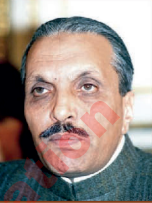
General Zai-Ul-Haq’s
The period from 1977 to 1988, marked by the military regime of General Muhammad Zia-ul-Haq, was one of profound transformation and turbulence in Pakistan’s history. General Zia’s rule was marked by significant shifts in domestic and foreign policy, including the Islamization of the state and Pakistan’s role in the Afghan conflict. This article explores the key events and policies of General Zia-ul-Haq’s era and their enduring impact on Pakistan.
The Coup and Ascendancy
General Zia-ul-Haq assumed power on July 5, 1977, following a military coup against the civilian government of Prime Minister Zulfikar Ali Bhutto. The coup was justified on the grounds of corruption and mismanagement under Bhutto’s leadership. General Zia promised to hold elections and transfer power to elected representatives, but these promises would be delayed for years.
Islamization of Pakistan
One of the defining features of General Zia’s regime was the Islamization of Pakistan’s legal and social framework. Zia aimed to Islamize the country’s laws and institutions, and this process had far-reaching consequences. The Hudood Ordinances, for instance, introduced strict Islamic punishments for various offenses, drawing both praise and criticism for their impact on civil liberties.
Zia’s regime also worked to strengthen religious parties and organizations, giving them greater influence in shaping the country’s policies and political discourse. The role of religion in public life became more prominent, significantly altering the social fabric of Pakistan.
The Afghan Conflict
The Soviet invasion of Afghanistan in 1979 brought a new dimension to Zia’s rule. Pakistan, under his leadership, became a key player in the U.S.-backed effort to resist the Soviet occupation. Pakistan’s involvement in the Afghan conflict had far-reaching consequences, including the influx of Afghan refugees, the proliferation of radical ideologies, and the emergence of militant groups.
Zia’s administration received significant military and economic aid from the United States and Saudi Arabia, but this support came with its own set of challenges, including the militarization of Pakistani society and the growth of religious extremism.
Economic Policies and Stagnation
General Zia’s regime implemented economic policies that aimed for self-reliance and reduced reliance on foreign aid. While these policies achieved some short-term successes, they also contributed to economic stagnation and hindered long-term development. Industries were heavily regulated, and Pakistan’s economy struggled to keep pace with regional competitors.
Political Repression and Suppression of Opposition
Throughout General Zia’s rule, political opposition was systematically suppressed. Civil liberties were curtailed, and dissenting voices were silenced. This environment hindered the development of democratic institutions and led to a growing sense of frustration among Pakistan’s civil society.
The End of General Zia’s Era
General Zia-ul-Haq’s era came to a tragic end on August 17, 1988, when a plane carrying him and several top military officials crashed, resulting in his death. The circumstances surrounding the crash remain a subject of speculation and conspiracy theories.
Conclusion
General Zia-ul-Haq’s eleven-year rule left a profound impact on Pakistan. His policies, particularly the Islamization of the state and Pakistan’s involvement in the Afghan conflict, continue to influence the country’s trajectory. While some view his era as a period of stability and conservative revival, others see it as a time of political repression and religious radicalization.
The legacy of General Zia remains complex and debated, reflecting the broader challenges of governance, democracy, and the role of religion in Pakistan’s society and politics. His rule was marked by both transformation and turmoil, leaving an enduring imprint on Pakistan’s history and identity.

